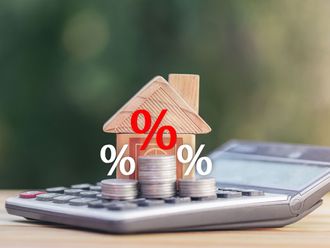In order to understand the dynamics of Dubai’s property market, a clear metric needs to be established for affordability and what constitutes a likely purchase for a first-time buyer.
Whilst there have been many measures utilised by existing analysts using median income levels, these do not appear to adequately factor in absolute budgets, especially when it comes to the villa and the town house space. Here the data is not distorted by the amplified supply in the smaller space of the spectrum (studios and one-bedroom apartments, which do not typically factor into the universe of first-time buyers).
It is this definition that will define a sharper context of the opportunities that are available for investors/end users and developers alike.
Starter homes are typically initiatives that incentivise first-time buyers (typically under 40 years) to purchase homes at price points that are “affordable” within the area. More often than not, given the lower purchasing power of this subset, these cluster around the suburban areas of the city, away from the job centers, where land lots are cheaper and facilitate such construction.
In the US, starter homes sales accounted for between a third and half of overall sales till about 2012. Since then these sales have declined as land lot prices have returned to their pre-crash peak levels of 2007.
Currently, starter home sales account for approximately 20 per cent of all new home sales. Important to note here is the definition of the term and what budget this constitutes. Whilst the US is a diversified housing market with varying income levels, the definition in tier one states account for values that are at $300,000 or less.
In areas like California, Massachusetts, New York and Illinois, upward adjustments are made to this definition, but even at budget levels of $500,000, starter home sales as a percentage of overall sales do not change much in these areas. Perhaps more importantly, the share of such sales over the last decade has moved from between 20-35 per cent of overall sales, suggesting that at current levels, there appears to be a relative oversupply of luxury homes as developers have chased higher profit margins.
In Dubai, when the same metric is applied to town houses and villas, the results are no less than stunning. In 2005, existing and off-plan sales launches that were under Dh2 million accounted for 85 per cent of overall supply, with 15 per cent being above that price bracket.
That statistic has dramatically changed in 2016, with more than 87 per cent of overall supply being in the price bracket of above Dh2 Million. In recent months, as developers have responded to “affordable initiatives”, the pendulum has started to swing the other way.
But if we look at recent data, there is still a staggering 70 per cent of upcoming projects that are offered above the Dh2 million price point in the horizontal space.
This has two important implications for the buying patterns of end users. The first is that millennials, whilst aspiring to home ownership in the suburbs (as recent surveys have indicated), are waiting until later in life to purchase homes than their previous generations. Secondly, even though payment plans have eased, overall tighter lending standards have meant that in the ready space, first-time buyers in this price bracket remain “squeezed out” as developers have moved upmarket in order to monetise higher margins.
Adding to this complication has been the fact that developers for the most part remain hesitant to pursue projects in far-flung areas, mindful of how this strategy backfired during the last property cycle.
Home building is analogous to a pyramid; the lower the price point goes, the bigger the base is. What the data currently reflects in Dubai is that, for the most part, the first-time buyer is still not being adequately catered to. It is for this reason that in the current property price cycle, “mid-income” properties have declined the least, given the relative lack of supply and options currently available.
Catering to these buyers remains critical as it allows them to progress upwards through the system, building equity along the way that can be used to purchase larger and more desirable homes at later stages of their life cycle. It is this variable that is likely to see a sea change in the years ahead as developers take cognisance and adjust price points, a shift that is already starting to gain impetus.
The writer is the Managing Director of Global Capital Partners.











